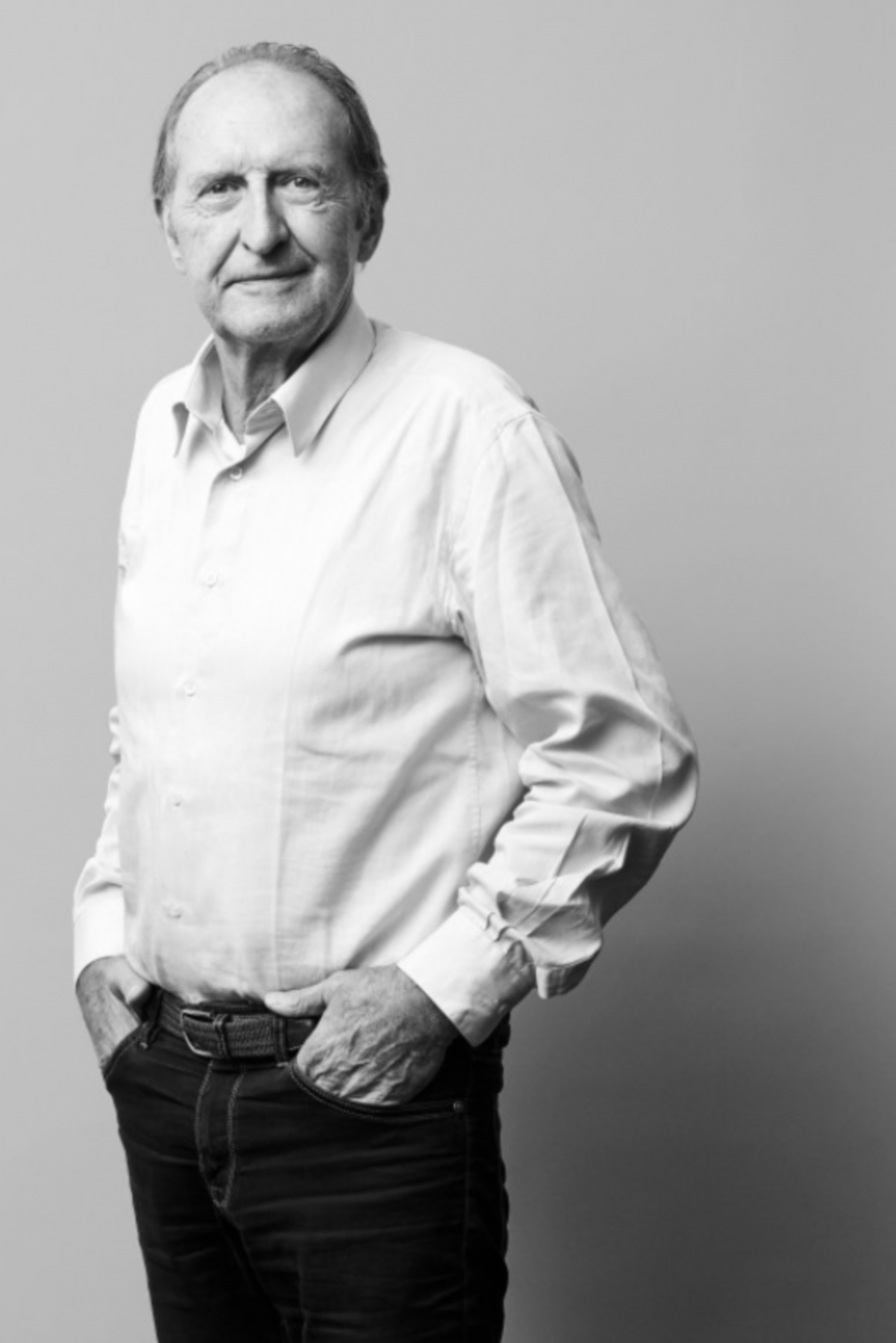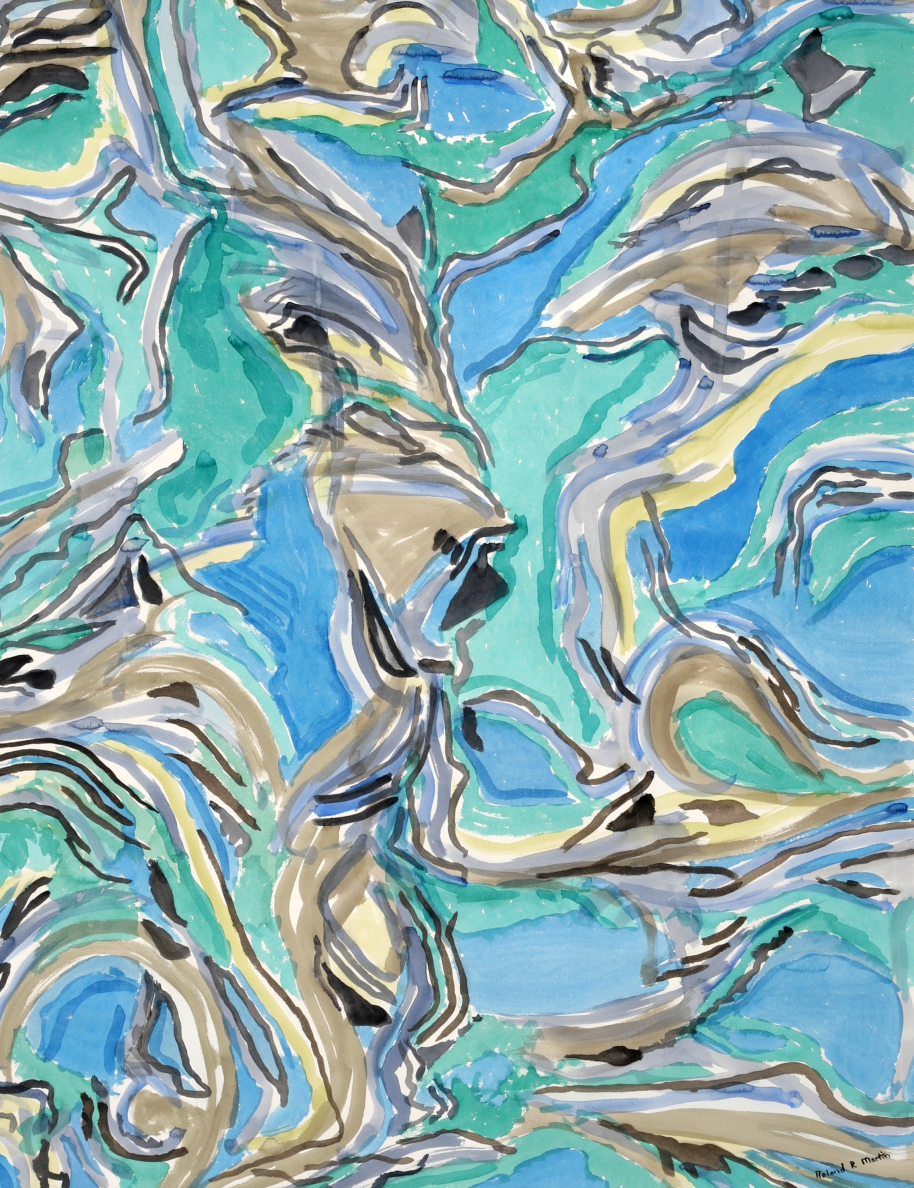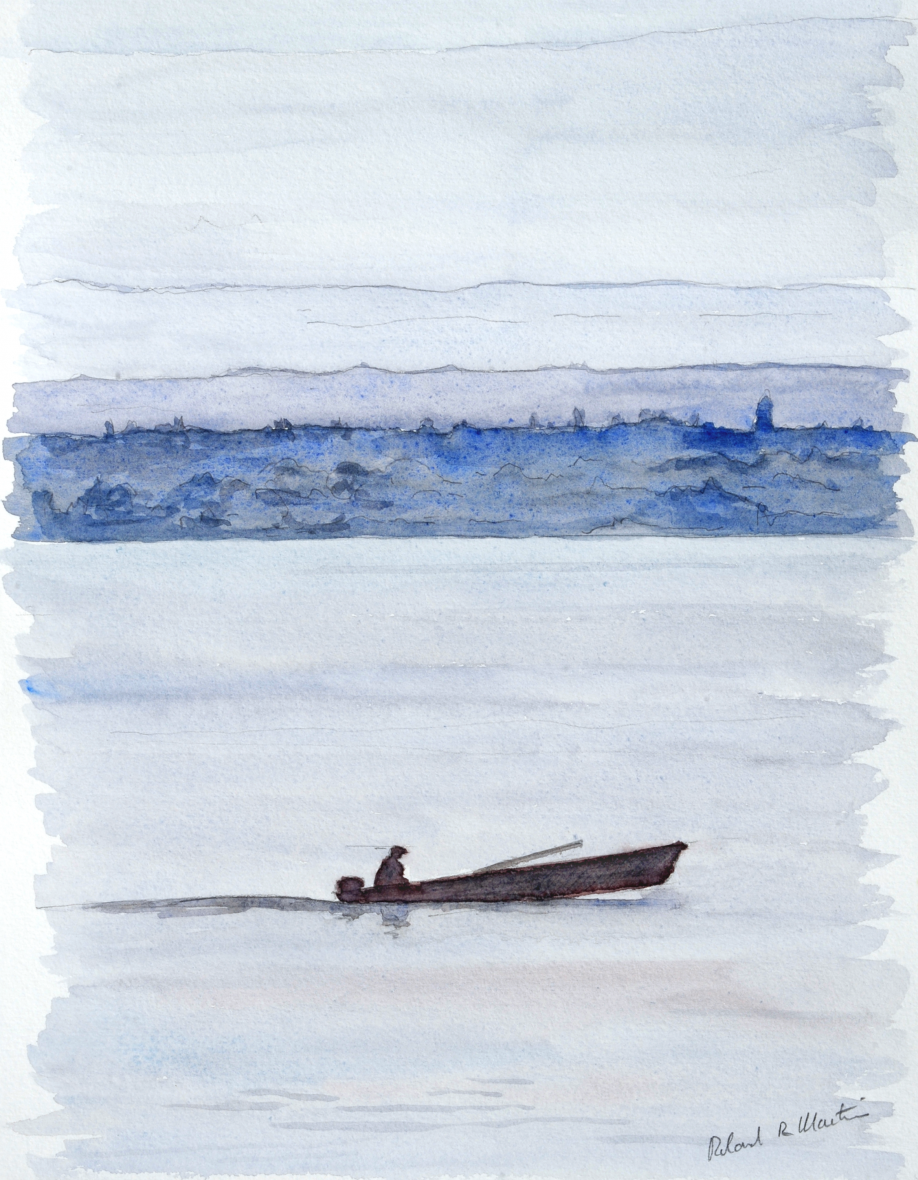Water a vital source

A handful of summers ago, Roland Martin found himself on a boat crossing the blue gold in all its vastness. On his return, he gave himself over to a few considerations, a way of questioning the present of life. The future of the planet.
All these reflections find a timely echo with the current viral crisis and a certain environmental awareness on a global scale.
Roland Martin is one of the founders of MVT Architects. A recognised geolobiologist, a convinced environmentalist and former president of the Club Nautique de Versoix, he is like a fish in water - to say the least. Because water has become a planetary issue and because MVT has a very special relationship with the liquid environment (nearly 50 projects directly linked to the lake), he has given himself over to some thoughts of general interest after having been confronted, during an oceanic transat, with the great blue.
These considerations and a few figures of general interest are there to remind us that there is something bigger than us that exists and that taking care of what surrounds us is perhaps the greatest gift we can give to our fellow man.
70% of the planet is covered by water.
"Everybody talks about ecosystem, pollution, CO2, global warming, oil shale, noise, renewable energy, melting glaciers, pollution of surface water and aquifers... drinking water. About 70% of the earth's surface is water. And in the human body, it's about 66%. The total amount of water in the world is 1.4 billion km3 of which 2.59% is fresh water, and less than 1% is drinking water. 1% !
Everywhere, it is a major issue. In South and South-East Asia; in China - and Vietnam; from Canada to Mexico via the United States: between Egypt and Ethiopia, between Israel and Palestine; in the common basin Turkey - Syria - Jordan - Lebanon - Iraq, between India and Pakistan... Are these problems "soluble" in water? »
Among China's 600 largest cities, more than half lack water, a hundred of which are severely lacking, according to Maihepireti Wulamu, a professor at the Xinjiang Normal University. In 2018, the BBC published a list of 11 cities with food problems: São Paulo, Bangalore, Beijing, Cairo, Jakarta, Moscow, Istanbul, Mexico City, London, Tokyo and Miami.
The question then arises: Should we have a right to water?
The seas, spaces of mystery and discovery
"During my first transatlantic race between the Grand Canary Islands and Martinique, an unforgettable voyage of initiation for me, I gave myself time for a few thoughts after 8 days of sailing in the middle of the Atlantic with around 4,500 metres of water under us.
Great sailors such as Fernand de Magellan, Christopher Columbus, Vasco de Gama, Jacques Cartier, James Cook, Vespucci, Drake, etc...all great discoveries have come through the water, at one time or another, explains a Roland Martin passionately concerned by the subject.
Closer to home, as far as global shipping is concerned, more than 60,000 ships sailing around the Earth make it the world's most important means of transport: 80% of the world's transport volume is by sea, and includes most of the raw materials, LNG carriers (transporting liquid gas at -162 degrees), icebreakers and cargo ships that use the North Seas. Transit through the great rivers, the Corinth Canal (1893), the Suez Canal (1859), Panama Canal (1914) ...".
During our deckchair, our water consumption was about 5 litres per person per day. The world is going to be increasingly subject to water stress, while it doesn't seem unthinkable to reduce our daily water expenditure.
So what can we do to reduce water consumption?
"I asked myself what relationship we had with water in our profession as architects. Apart from the fact that it is one of the few professions that is weather-related - some work requires dry weather (earthworks, waterproofing, no concrete or plaster in very cold weather, etc.), do we know that we use a lot of water to build our homes?
I have tried to calculate only the water consumption used to build a building of 38 dwellings in traditional construction (basements, reinforced concrete walls and slabs). However, this does not take into account the amount of water needed to manufacture these materials, which is very consuming for cement and plaster, tiling or brick making.
Concrete: 2,530 m3 contain 160 l/m3 404.80 m3
Cement floor screeds: 3'135 m2 contain 19 l/m2 502.00 m3
Add to this the water contained in plaster (6,615 m2), plasterboard (1,565 m2), paint (4,540 m2), floor glue (3,135 m2), various plasters (2,040 m2): 184.00 m3
The total amount of water used amounts to... 1’090,80 m3
That's about 9'100 baths of drinking water to build a building ! »
If we keep looking no further than the end of our tap...where are we going?
50 liters of water per person per day
"If we talk about cost, do you know how much 1 m3 of drinking water costs? In Switzerland (as in other countries), there are big disparities. In Martigny, it is CHF 6.50, while in Le Locle, it is CHF 1.00. In Geneva, it is CHF 4.60. In France, it's about CHF 3.60, in Denmark CHF 7.50, in Great Britain CHF 4.60, in Ghana CHF 11.-....
And what is the price of 1 m3 of Perrier mineral water? Well, it costs CHF 17'260 !
The WHO stipulates that the quantity of water consumed in a "comfortable" situation should be 2'500 m3 of water/year/person, and in a "shortage" situation 1'000 m3/year/person.
It further specifies that about 50 litres of water/day/person is the minimum "intermediate quantity" to cover health, hygiene and personal domestic use needs - the minimum vital amount being around 20 litres. Our water consumption is extreme in Switzerland, along with Canada and the United States, as it corresponds to more than 250 litres/person/day; in Finland, Greece, Sweden and Korea, it is 160 to 250 l/d/p; in Germany, the Netherlands, Poland and Belgium, it is 130 l/d/p; Asia and South America consume between 50 - 100 l/d/p; sub-Saharan Africa subsists on barely 10 l/d/p! »
Beyond the consumption of each person, we must also realize the important losses of water here and there. Thus, controlling water distribution installations, fighting against water leaks from public and private distribution networks is important, because in the world this "waste" represents 30% of losses.
What is therefore needed to make water a protected, common, universal public good accessible to all, whether for food, health, well-being or pleasure?
EXHIBITION//
Aquarelles by Roland Richard Martin
" MER & PAYSAGES DES PROFONDEURS ABYSSALES "
Festival de Bellerive
27th of august till the 3rd of septembre 2020
Chemin de la Dame 67
1245 Collonge-Bellerive

